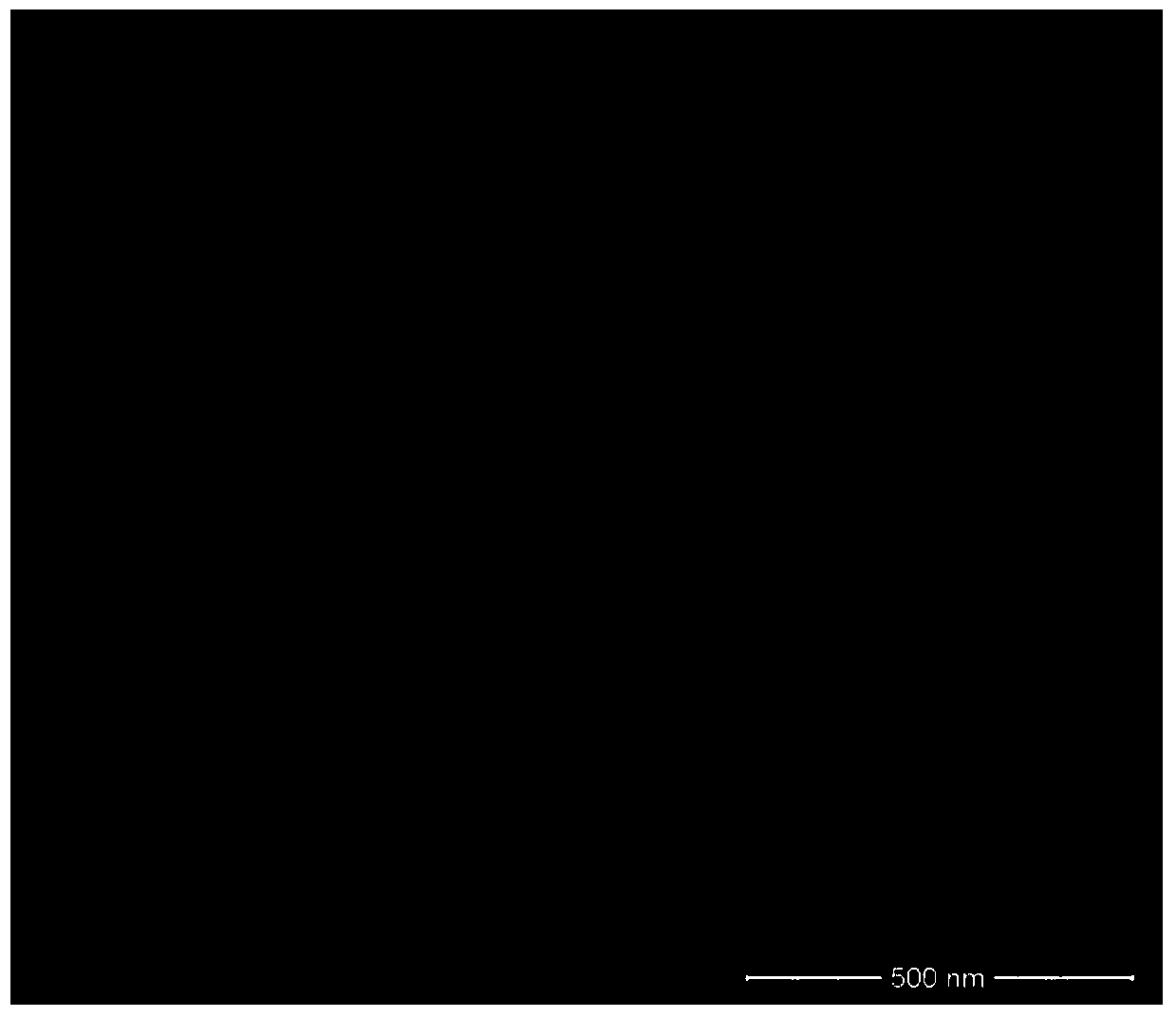A kind of shape control agent and its preparation method and application
A regulator and morphology technology, applied in chemical instruments and methods, inorganic chemistry, non-metallic elements, etc., can solve the problems of nanoparticle agglomeration, affecting activity and subsequent use, and achieve diverse morphology and excellent biocompatibility The effect of simplification of property and shape regulation
- Summary
- Abstract
- Description
- Claims
- Application Information
AI Technical Summary
Problems solved by technology
Method used
Image
Examples
preparation example Construction
[0064] 1. Preparation of Morphology Regulating Agents
[0065] First, the preparation of the morphology regulator will be described. The conversion rate of the morphology regulator was measured by the miniDAWN Tristar aqueous gel permeation chromatography (GPC) produced by Wyatt Technology Co., Ltd., and calculated from the ratio of the main peak of the morphology regulator to the unreacted polyoxyethylene ether type monomer.
Embodiment 1-1
[0067] In this example, the anionic monomer m1 is acrylic acid, the polyoxyethylene ether monomer m2 is allyl polyoxyethylene ether (molecular weight is 2500), the molar ratio of m1 to m2 is 4.5:1, and the initiator used is Ammonium sulfate-sodium bisulfite system.
[0068] Take 2.5 kg of the aforementioned polyoxyethylene ether type monomer, dissolve it in an appropriate amount of water to form a 60% mass fraction solution, add 25.08 g of ammonium persulfate to it, and obtain solution a-1. Take 324g of acrylic acid, dissolve it in water to form a solution with a mass fraction of 60%, add 13g of mercaptopropionic acid and 5.72g of sodium bisulfite, and dissolve to obtain solution b-1. Under the protection of nitrogen and stirring at 300±50rpm, drop b-1 into a-1 at a constant speed at 60 degrees, and the dropwise addition is completed after 2 hours, and then react for 1 hour, and then neutralize the reaction system to pH8-9 with liquid caustic soda. A solution of regulating ag...
Embodiment 1-2
[0070] In this example, the anionic monomer m1 is acrylic acid, the polyoxyethylene ether monomer m2 is allyl polyoxyethylene ether (molecular weight is 1000), the molar ratio of m1 to m2 is 3:1, and the initiator used is Ammonium sulfate-sodium bisulfite system.
[0071] Take 1 kg of the aforementioned polyoxyethylene ether type monomer, dissolve it in an appropriate amount of water to form a solution with a mass fraction of 40%, and add 18.24 g of ammonium persulfate to it to obtain solution a-2. Take 216g of acrylic acid, dissolve it in water to form a solution with a mass fraction of 40%, add 19g of mercaptopropionic acid and 4.16g of sodium bisulfite, and dissolve to obtain solution b-2. Under the protection of nitrogen and stirring at 300±50rpm, drop b-2 into a-2 at a constant speed at 60 degrees, and the dropwise addition is completed after 2 hours, and then react for 1 hour, and then neutralize the reaction system to pH8-9 with liquid caustic soda. A solution of regul...
PUM
| Property | Measurement | Unit |
|---|---|---|
| molecular weight | aaaaa | aaaaa |
| molecular weight | aaaaa | aaaaa |
| molecular weight | aaaaa | aaaaa |
Abstract
Description
Claims
Application Information
 Login to View More
Login to View More - R&D
- Intellectual Property
- Life Sciences
- Materials
- Tech Scout
- Unparalleled Data Quality
- Higher Quality Content
- 60% Fewer Hallucinations
Browse by: Latest US Patents, China's latest patents, Technical Efficacy Thesaurus, Application Domain, Technology Topic, Popular Technical Reports.
© 2025 PatSnap. All rights reserved.Legal|Privacy policy|Modern Slavery Act Transparency Statement|Sitemap|About US| Contact US: help@patsnap.com



